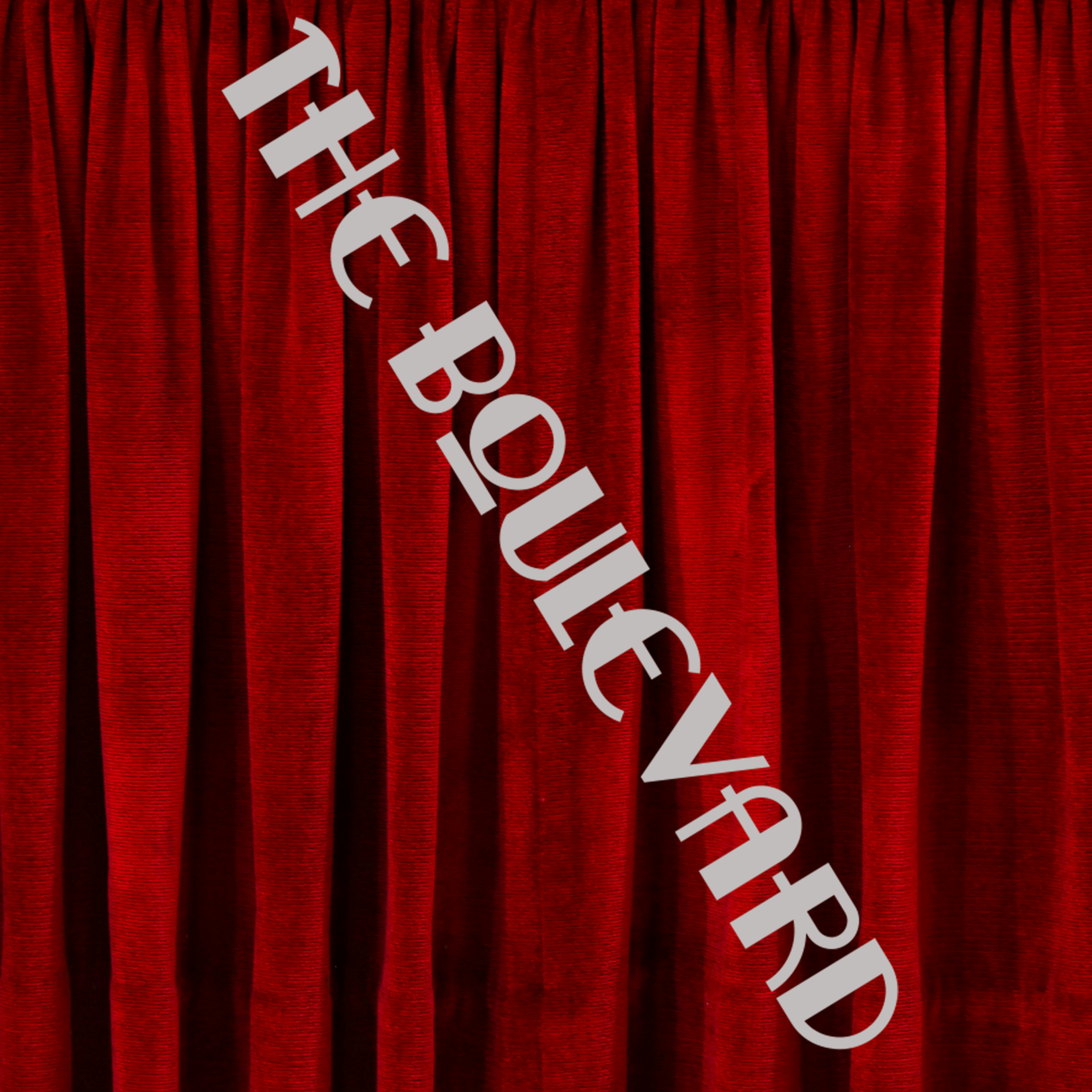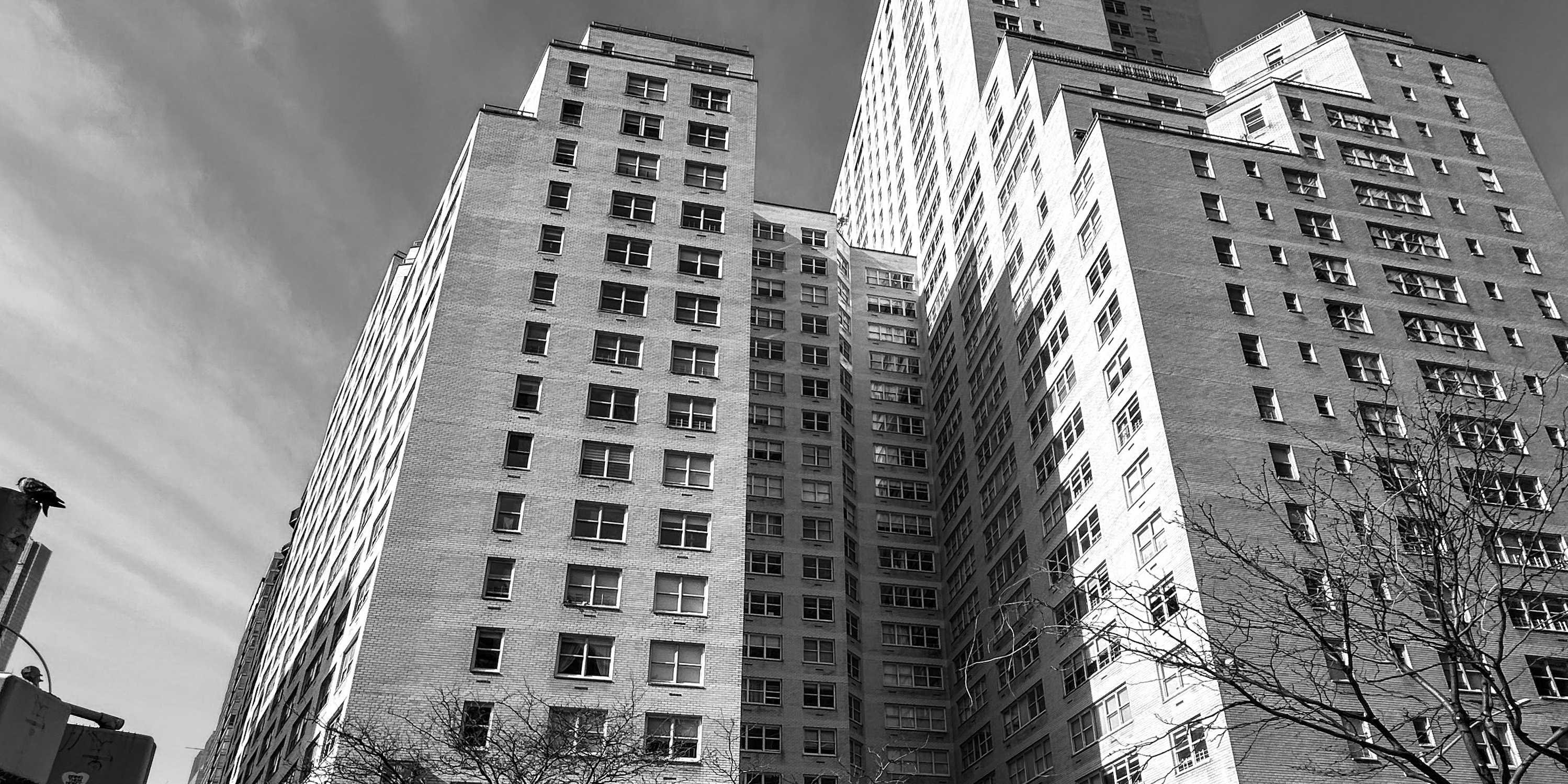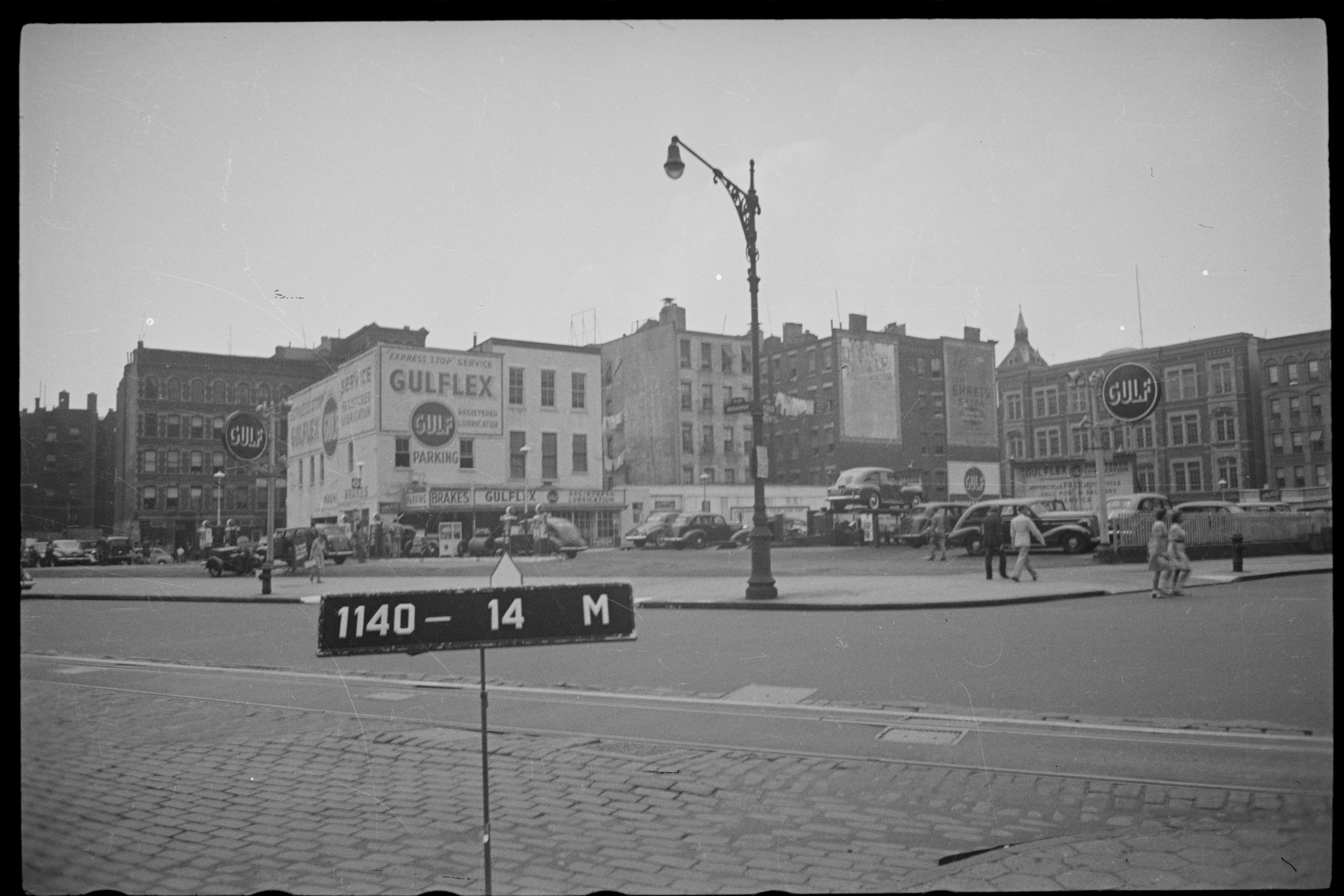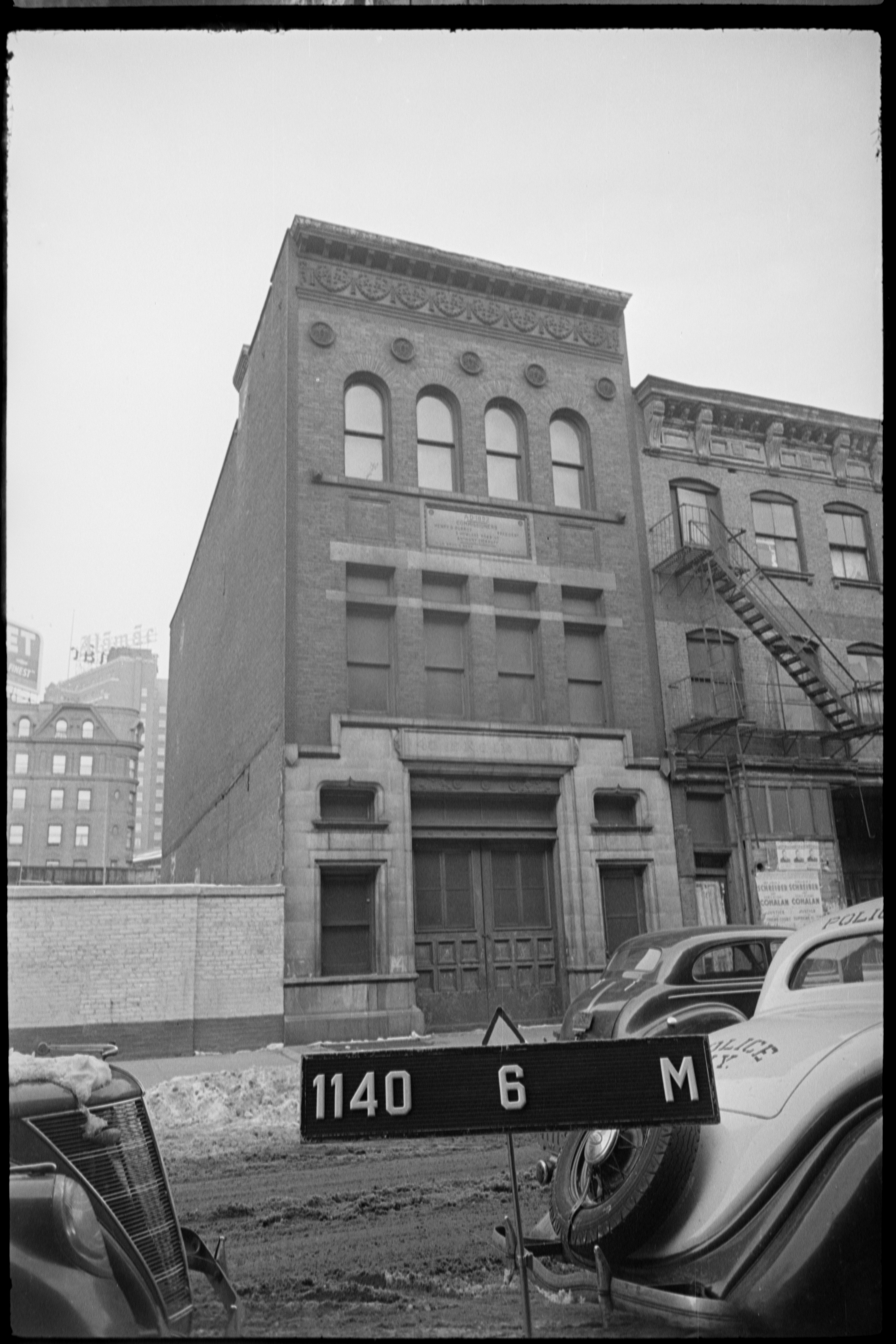
2001-2017 Broadway, The Dorchester Towers
by Megan Fitzpatrick
Unlike adjacent city blocks just south of the one the Dorchester Towers now occupies, Block 1140 did not experience the same ‘slum’ clearance to make way for Lincoln Square, as we know it today. It was relatively unbuilt throughout the late 19th and mid-20th centuries.
The 1867 Dripps Map of New York City shows that Block 1140 was one of the more developed blocks at this time on the rather sparse Upper West Side. This parcel of land was owned by farmer Jacob Harsen whose family managed a swath of land from 68th-81st Street, known as Harsenville. The map shows multiple wood frame structures along Broadway and the north side of West 68th Street and the Reformed Dutch Church, founded by Harsen, to the northeast of the block, across the Old Bloomingdale Road.
We get a clearer picture of the types of structures in the 1907 Sanborn Fire Insurance Map. The Upper West Side had moved away from farming at this point, and towards various types of industrial manufacturing, particularly evident among Broadway shopfronts. A large paint factory occupied most of the block, and O. J. Gude’s outdoor advertising sign factory was housed on the interior. FDNY’s Engine Company No. 40 was located at 153 West 68th Street, now the residential entrance of the Dorchester Towers. By 1955, much of the block was cleared, except for the Fire Engine building and three brick structures, to make way for a gas station.
Critics of Lincoln Square and its development worried that it would become an “isolated cultural precinct,” but it was the catalyst for a lot of new residential development
In the mid-century, most of the city blocks from West 60th to 66th Streets (known as San Juan Hill), containing rowhouses, tenements, and community facilities, were cleared and rebuilt into cultural institutions, most famously Lincoln Center and Fordham University, and a mixture of housing on highly valuable land. The Lincoln Square Renewal Project, a Title I project developed by the City, changed not only how the public perceived the City, sowing distrust towards the administration, but it changed how the surrounding neighborhood, particularly lower Broadway, looked.
Critics of Lincoln Square and its development worried that it would become an “isolated cultural precinct,” but it was the catalyst for a lot of new residential development. By 1979, 30% of all buildings from West 59th Street to West 72nd Street were new constructions, including the Dorchester Towers.
Property values soared in the immediate aftermath of the re-development and real estate and hotel developer Paul Milstein decided to capitalize on this. The Dorchester Towers was the first privately developed apartment building in the area erected after Lincoln Center’s completion. Its architect, S. J. Kessler & Sons was, however, more familiar with designing Title I work than privately-development buildings.
S. J. Kessler and his son Melvin E. Kessler had more Title I commissions than any other architectural firm working in the city in the late 1950s. This did not come without its controversies. The firm was banned from any future projects involving state funds after its involvement in the Manhattantown project, one of the most corrupt urban renewal projects in the city. The Kessler’s knew how to manipulate the City’s system well by reaping the most money from public works projects and cultivating relationships with bureaucrats. The firm’s banishment from publically funded projects would not last, however, and they would continue to design both Title I housing and market rate. Melvin Kessler himself once admitted that “architecture is not the most ethical profession in the world.”
Architectural critic Paul Goldberger described The Dorchester Towers as a “pile of white brick” that is mostly “undistinguished” but not offensive in style. It was the first of these “white boxes” as they were often described, to be constructed on the Upper West Side, but not the first in the city. These building types that would proliferate in the 1960s were first ushered in by Skidmore, Owings, and Merrill’s Manhattan House on the East Side.
The apartment building occupied the whole block and its design was largely influenced by zoning laws requiring the structure to have an interesting pattern of setbacks along Broadway. The Dorchester Towers officially opened in June 1965. The 35-story building listed studios for $178 a month and up to three-bed apartments for $450 a month.
The Dorchester Towers was home to a number of notable individuals who called this newly developed section of the Upper West Side home. Popular singer and actor Allan Jones lived here with his wife. He kept a room full of film, phonograph records, tapes, and radios. One day while he was rewinding some of those tapes, his equipment went up in flames causing massive damage to his apartment. The Engine Company No. 40, which was once housed on the block, was quick on the scene.
In 1976, Dorchester residents were sleepless and anxious thanks to the popular club ‘Vamps’ located at the ground floor level of the building. Two hundred and seventy-four residents signed a petition to mitigate extreme noise, vibrations, and excessive crowds caused by the club. Its cabaret license was swiftly revoked and the club ultimately shut down in August of 1976. These sorts of complaints would bring an end to clubbing on the Upper West Side in the 1980s because of zoning amendments.
Over the years, unfortunately, a number of high-profile criminals have sought refuge in the Dorchester Towers. The most notorious was Luis Stepenberg. In August 1970, the largest heroin smuggling operation in the United States at the time was uncovered and led back to Stepenberg and the Dorchester Towers. The investigation began with the discovery of a white powdery substance on the floor of a washroom in a jetliner that landed at JFK in 1968 and culminated with the discovery of a suitcase of heroin at the airport and the arrest of smuggler, Jack Grosby. Grosby’s cash bail of $50,000 was put up by Luis Stepenberg, reported by the New York Times to have lived at 155 West 68th Street.
Both Grosby and Stepenberg fled the country, but were unsuccessful in evading the law, and were arrested and extradited to the US. Stepenberg was held on bail for $1.5 million, “the highest amount ever set in the United States,” according to United States Attorney Edward R. Neaher. Stepenberg, a naturalized US citizen born in Argentina, was indicted on 36 counts of smuggling and charged with importing $9 million worth of heroin into the country. At the time of his indictment, the Government contended that Mr. Stepenberg was the head of one of the world’s major drug smuggling rings.
In 1976, Dorchester residents were sleepless and anxious thanks to the popular club ‘Vamps’ located at the ground floor level of the building.
Stepenberg became a multi-millionaire because of his criminal activities. He had many means of operation, including shipping heroin in cans labeled “fish,” in banana crates and typewriters. He also ran two cigar stores along Broadway, one on 95th Street and another on 137th Street, which served as fronts for the heroin trade. The Dorchester Towers tenant was convicted in February 1971 but died in jail a month later.
The Dorchester Towers was back in the newspaper headlines in 2009 in a true crime-type scenario when the body of Shele Danishefsky was found dead in the bathtub in her apartment. She was found by her nine-year-old daughter. Although under mysterious circumstances, her death was originally determined to be an accident. Investigations into her death were stalled because her body was buried without an autopsy due to wishes from her Orthodox Jewish family and no evidence was uncovered from the scene because police allowed a rabbi to clean the blood-soaked bathroom with peroxide. Several years later, the victim’s family started to become suspicious of her ex-husband.
Shele Danishefsky was married to Rod Covlin for 25 years. Danishefsky was a successful finance executive and had amassed quite a fortune. On the day she died, she was allegedly planning on removing her ex-husband from her will. This was what tipped off her family who ultimately asked for an autopsy. In April 2010, a medical examiner found that her death was not an accident, but due to strangulation. It took 9 years after her death for Covlin to go to prison for her murder. Danishefsky was a devout congregant and board member of the nearby Lincoln Square Synagogue, which held multiple memorials for her.
The Dorchester Towers remains unchanged since its construction, but the surrounding environment continues to grow upwards towards the sky. The Fire Engine Co. 40 that once occupied the block prior to the Dorchester Towers, remains close by on the corner of 66th Street and Amsterdam Avenue.
References
Architectural Forum, August 1959.
Daily News, June 26, 1965.
Daily News, August 5, 1976.
Goldberger, Paul, The City Observed New York: A Guide to the Architecture of Manhattan. Vintage Books. 1979.
New York Public Library, NYC Fire Insurance, Topographic and Property Maps Collection
New York Times, January 28, 1960.
New York Times, August 27, 1970.
New York Times, December 8, 1970.
New York Times, February 27, 1971.
New York Times, December 20, 1976.
New York Times, November 3, 2015.
New York Times, March 13, 2019.
Stern, Mellins & Fishman, New York 1960: architecture and urbanism between the Second World War and the Bicentennial. Monacelli Press, NY. 1995.
Megan Fitzpatrick is the Preservation and Research Director at LANDMARK WEST!
BUILDING DATABASE
Keep Exploring
Be a part of history!
Think Local First to support the businesses at 2001-2017 Broadway:
Meet Avi Kaner!




